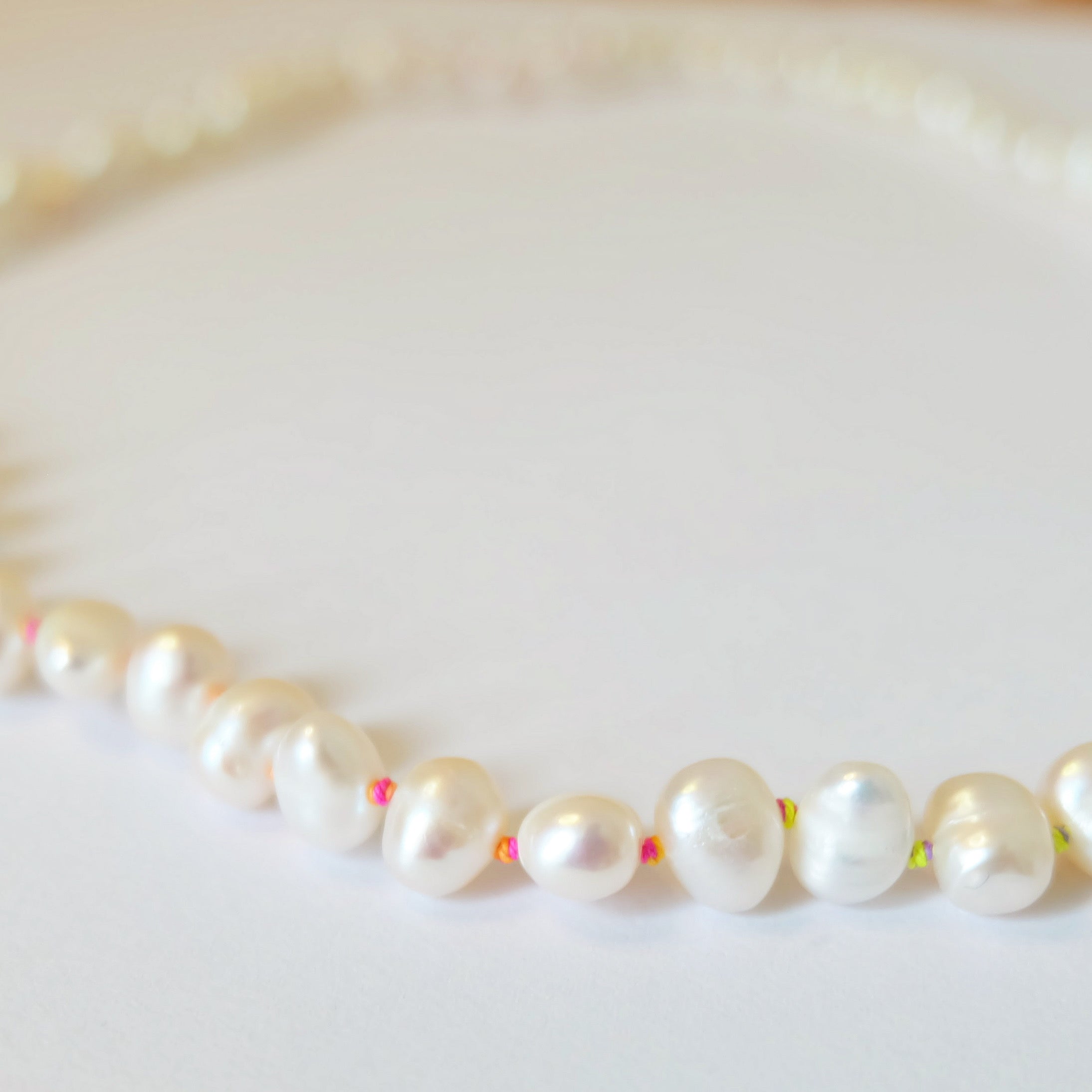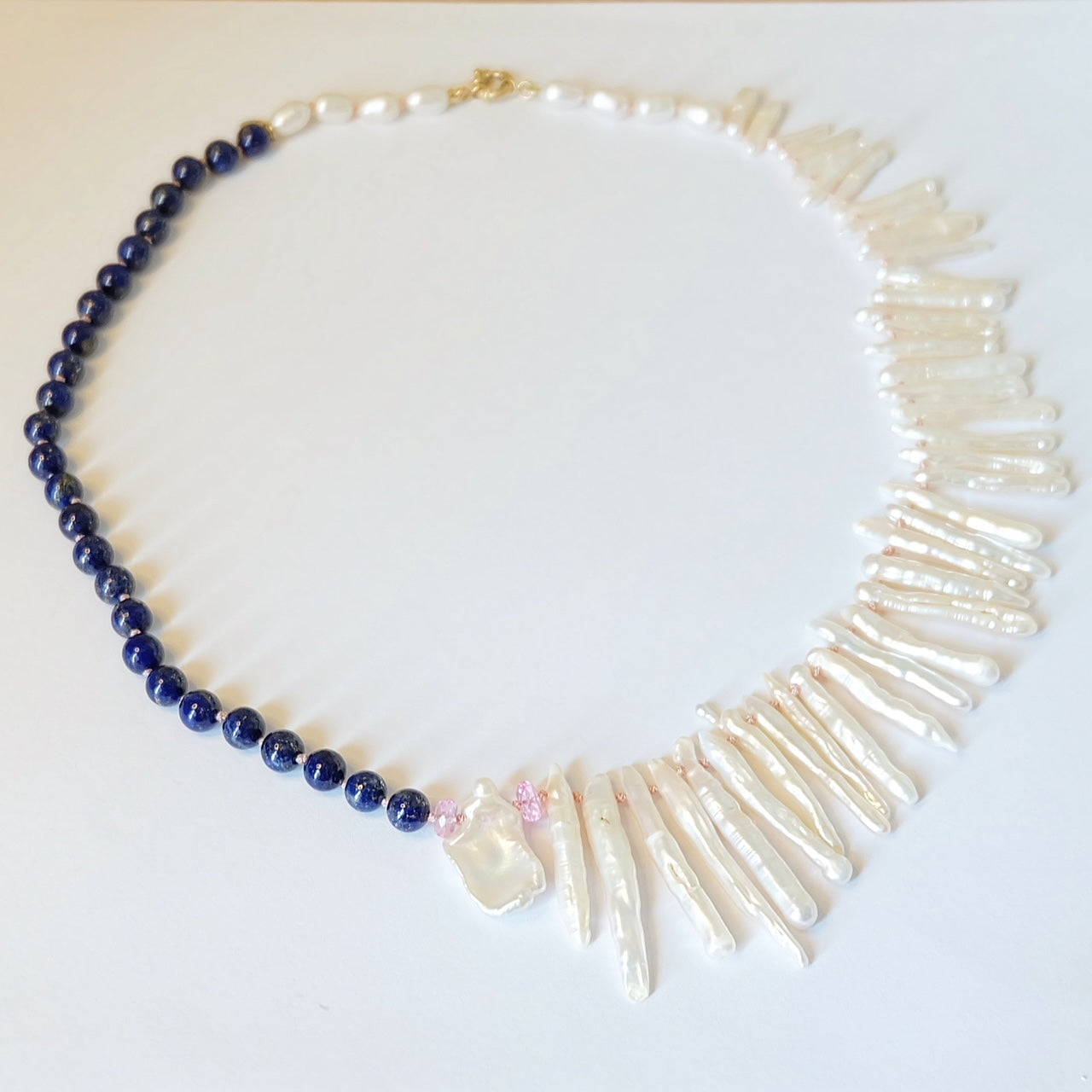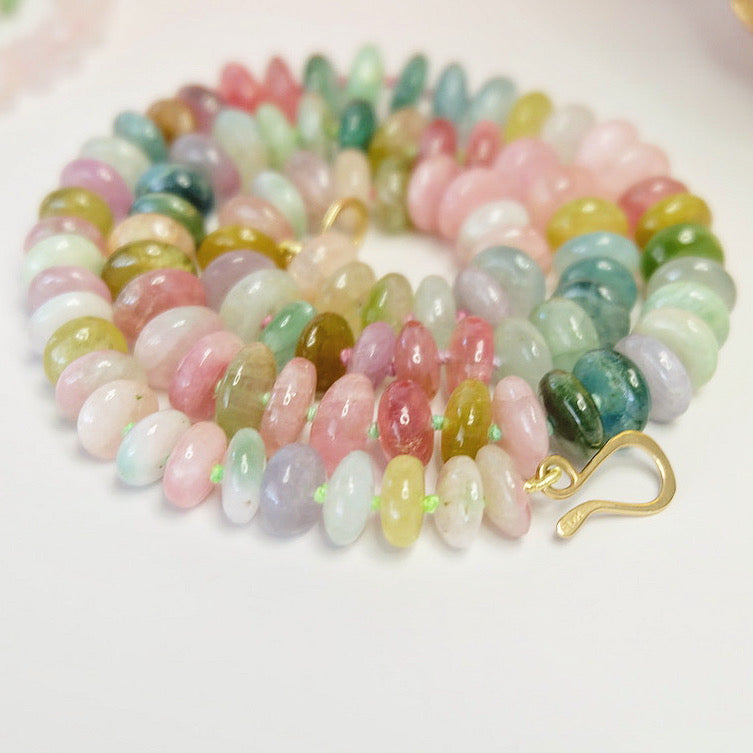
What is Karat Gold? A Guide to 9K-24K
Share
Unlock the secrets of gold karats and discover what makes 9K, 10K, 14K, 18K and 24K gold unique.
Gold karats are a measure of the purity of gold alloys. The term 'karat' denotes the proportion of gold in a piece of jewelry, with 24 karats (24K) representing pure gold. However, pure gold is too soft for most practical uses, so it's often mixed with other metals like copper, silver, or palladium to increase its durability and strength.
Each karat represents 1/24th of the whole, so 18K gold, for example, is 18 parts gold and 6 parts other metals. This system allows consumers to understand the quality and purity of the gold they are purchasing, with higher karat numbers indicating higher gold content.
of the gold they are purchasing, with higher karat numbers indicating higher gold content.
The karat system helps consumers understand the quality and value of the gold they are purchasing. Higher karat numbers mean a higher percentage of gold content, which typically results in a higher price and greater softness of the metal.
9K Gold: The Budget-Friendly Option
9K gold contains 37.5% pure gold, with the remaining 62.5% made up of other metals. This lower gold content makes 9K gold more affordable than higher-karat options. It's also more durable because the additional metals make the alloy harder, though it's less lustrous than higher-karat gold.
Due to its affordability and durability, 9K gold is often used in less expensive jewelry and items that are subject to more wear and tear. However, it's less popular in the United States and more commonly found in countries like the UK and Australia.
SHOP OUR 14K GOLD COLLECTION
Explore our handmade 14k gold fine jewelry collection.
10K Gold: Balancing Durability and Affordability
10K gold is composed of 41.7% pure gold and 58.3% other metals. This makes it a practical choice for those who want a balance between durability and cost. It's less expensive than higher-karat gold but still offers a decent level of purity and a good appearance.
While it's more durable than 14K and 18K gold due to the higher percentage of other metals, 10K gold can sometimes cause allergic reactions in people sensitive to certain alloys like nickel. Despite this, it's a popular choice for everyday jewelry, including rings, bracelets, and necklaces.
14K Gold: The Popular Choice for Fine Jewelry
14K gold fine jewelry is one of the most popular choices for fine jewelry, consisting of 58.3% pure gold and 41.7% other metals. This composition strikes a good balance between purity, durability, and affordability, making it ideal for engagement rings, wedding bands, and other high-quality pieces.
58.3% pure gold and 41.7% other metals. This composition strikes a good balance between purity, durability, and affordability, making it ideal for engagement rings, wedding bands, and other high-quality pieces.
14K gold offers a rich color and luster that is highly sought after, and its durability makes it suitable for everyday wear. It's also less prone to scratching and bending compared to higher-karat gold, providing a good mix of beauty and practicality.
18K Gold: The Luxurious High-End Option
18K gold contains 75% pure gold and 25% other metals, making it a luxurious choice for high-end jewelry. Its higher gold content gives it a richer, more vibrant color compared to lower-karat options. However, this also makes it softer and more prone to scratching and bending.
scratching and bending.
Due to its elegance and high purity, 18K gold is often used in fine jewelry, including designer pieces and luxury watches. While it's more expensive and delicate than 14K gold, its allure and prestige make it a coveted option for those looking to invest in high-quality, beautiful jewelry.
Understanding 24K Gold
24K gold is the purest form of gold, consisting of 99.9% gold with minimal impurities. It is known for its bright yellow color and is often used in high-end jewelry and investment pieces. However, due to its softness, 24K gold is not typically used for everyday jewelry.
While 24K gold is highly valued for its purity, it is also more prone to scratching and bending. This is why lower karat gold, which is alloyed with other metals to increase durability, is often preferred for items that require more resilience.
The Different Colors of Gold
Gold is available in a variety of colors, each created by combining pure gold with different metal alloys. The most common colors include yellow, white, and rose gold. These different colors allow for a range of aesthetic choices to suit various preferences and styles.
The color of gold can affect its value and appeal. For instance, yellow gold is often considered classic and timeless, while white gold offers a more contemporary look. Rose gold, with its pinkish hue, has gained popularity for its romantic and unique appearance.
The Allure of White Gold
White gold is created by alloying pure gold with white metals such as palladium, silver, or nickel. It is often plated with rhodium to enhance its white appearance and provide a lustrous finish. White gold is a popular choice for modern jewelry, including engagement rings and wedding bands.
lustrous finish. White gold is a popular choice for modern jewelry, including engagement rings and wedding bands.
One of the main attractions of white gold is its ability to complement a wide range of gemstones. Its neutral color allows it to pair beautifully with both colored and clear stones, making it a versatile option for various designs.
Why Choose Rose Gold?
Rose gold is made by alloying pure gold with copper and sometimes silver, giving it a distinctive pinkish-red hue. This unique color has made rose gold a trendy choice for fashion-forward individuals looking for something different from the traditional yellow or white gold.
Aside from its aesthetic appeal, rose gold is also known for its durability. The copper content not only gives it its color but also makes it more resistant to wear and tear. This makes rose gold a practical and stylish option for everyday jewelry.
Visual and Physical Inspections: First Steps in Verification
Begin your verification process with a visual inspection. Look for stamps or hallmarks indicating '14K', '14KT', or '585', which denote 14 karat gold. These marks are usually found in discreet areas, such as the inside of a ring band or the clasp of a necklace.
Next, perform a physical inspection. Genuine 14 karat gold has a noticeable weight and should not appear overly lightweight. Examine the piece for signs of discoloration or unusual wear, which might suggest it is not solid gold.
Conducting Simple At-Home Tests
Several simple tests can be performed at home to help verify the authenticity of 14 karat gold. One common method is the magnet test; gold is not magnetic, so if the piece is attracted to a magnet, it is likely not real gold.
Another test is the ceramic scratch test. Run the gold gently over a piece of unglazed ceramic tile. Real gold will leave a gold streak, while fake gold will leave a black mark. Always be cautious when performing these tests to avoid damaging the jewelry.
Using Professional Tools and Techniques
For more accurate verification, professional tools and techniques can be employed. A jeweler’s loupe allows for a closer inspection of hallmarks and craftsmanship details. Acid tests can also be conducted, where a small scratch is made on the jewelry and exposed to nitric acid to observe any reaction.
Electronic gold testers provide a non-invasive method to determine gold purity. These devices measure the electrical conductivity of the metal, offering a quick and accurate assessment of karat value.
Seeking Expert Appraisals for Confirmed Authenticity
While at-home tests and professional tools can provide valuable insights, seeking an expert appraisal is the most surefire way to confirm the authenticity of 14 karat gold. Certified appraisers have the expertise and specialized equipment to accurately evaluate and authenticate gold jewelry.
An expert appraisal not only verifies the gold's authenticity but also provides a detailed valuation, which is essential for insurance purposes and future resale.















































